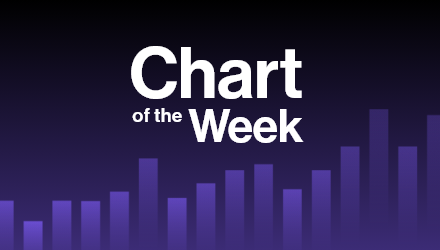Demand for dividend ETFs has been strong in 2022 as advisors and end clients sought equity income in a rising rate environment. Higher dividend-yielding ETFs were particularly appealing. For example, the Vanguard High Dividend Yield ETF (VYM), the second-largest U.S. dividend ETF, pulled in $8.0 billion of new money. VIG recently sported a 3.3% 30-day SEC yield. However, with the yield on the 10-year Treasury note having passed 4.0%, sentiment might be shifting.
During a webcast VettaFi hosted in October with Nuveen offering expertise, we asked advisors, “How are you using dividend strategies in client portfolios? The most frequently cited answer was “For capital appreciation/total return,” given by 41% of the respondents. This was more than “For income” (24%), “For Diversification” (18%), or “For volatility mitigation” (17%).

We believe advisors might be more interested in index-based ETFs constructed based on dividend growth attributes, such as the Vanguard Dividend Appreciation ETF (VIG). While VIG remains the largest US dividend ETF based on assets, the ETF only gathered $2.4 billion in 2022, one-third the demand VIG’s sibling VYM incurred.
In addition, VettaFi thinks demand could accelerate for actively managed dividend ETFs. Several interesting products have been launched in the past three years that provide equity income and potential capital appreciation benefits from security selection and valuation awareness. With an active ETF, every spot in the portfolio is earned daily as the managers have more detailed buy and sell disciplines than an index.
A few examples include the Capital Group Dividend Value ETF (CGDV), the Freedom Day Dividend ETF (MBOX), and the T. Rowe Price Dividend Growth ETF (TDVG).
While these three ETFs fall under the same broad investment style – actively managed dividend ETFs – they are different. For example, CDGV and MBOX provide daily transparency of the full portfolio, while TDVG’s website currently only shows holdings as of September 30.
At the end of the third quarter, for CGDV and TDGV, two of the three largest positions were in the information technology sector. While both had Microsoft in a hefty position, management of CGDV favored Broadcom over Apple. In contrast, two of MBOX’s three largest quarter-end positions were within the energy and financial sectors, not information technology. Of course, with active management, portfolios can and will change throughout the year based on management’s discretion.
In exchange for the potential security selection benefits, actively managed ETFs often charge higher fees than index-based ETF alternatives. CGDV has the lowest expense ratio, 0.33%, of the three ETFs cited above, but its fee is meaningfully higher than the 0.06% fee for VIG.
To receive more of Todd’s research, reports, and commentary on a regular basis, please subscribe here.
For more news, information, and strategy, visit the Active ETF Channel.








